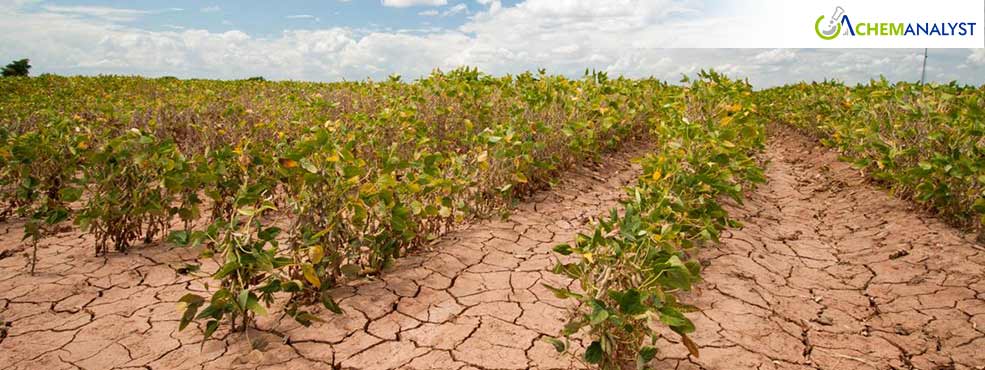US Faces Unprecedented Drought Crisis: Agriculture Land Affected in 48 States
- 09-Nov-2024 4:15 AM
- Journalist: Motoki Sasaki
The United States is grappling with a severe and widespread drought that has gripped nearly every state, impacting millions of people and vast agricultural lands. This unprecedented crisis, exacerbated by climate change, has far-reaching consequences for the nation's economy, especially its agricultural sector.
As per the data released on US Drought Information Portal, until November 5 all US states except Alaska and Kentucky are currently experiencing drought conditions. Over 45% of the country and Puerto Rico is affected by the dire climatic conditions. More than 150 million people and 318 million acres of crops in these states are facing drought-related challenges.
As on November 5, drought is severely affecting several key crops across the United States, with varying levels of impact depending on the crop. Corn, a major staple crop, is facing the most widespread drought conditions, with 71% of the area used for its production being affected. 84% of Sunflower production area is facing extreme drought conditions. Durum wheat, used for pasta and semolina, is also experiencing significant drought stress, with 67% of its production area impacted. Cotton is another crucial agricultural product, is affected in 40% of its growing areas. Peanuts, which are an important cash crop, have 29% of their production areas impacted by drought.
Winter wheat, used to produce flour, has been particularly vulnerable to the hot and dry summer, while other crops like hay, wheat, and sorghum have seen slight reductions in yield—about 0.5%, 0.8%, and 0.7%, respectively, due to a month of moderate drought. Other crops like rice, soybeans, and barley are also struggling, with 19%, 63%, and 33% of their respective production areas affected by drought. Sugar-beet and sugarcane production are less affected, with 64% and 5% of their areas impacted.
This drought is primarily driven by human-induced greenhouse gas emissions, as well as global water cycle being increasingly out of balance. Cities like NYC are facing the worst drought since 1826, with 8.25 million people being put on drought watch. These conditions are caused due to high temperatures that accelerate evaporation, deplete soil moisture and dry out vegetation.
Although US is a significant agricultural producer, it also relies on imports to supplement its domestic supply. The country primarily imports high-value agricultural products, such as fruits, vegetables, and tropical commodities like coffee, cocoa, and rubber. Key import sources include Mexico, South America, and Canada, particularly for fruits, vegetables, and meat, respectively. While the US maintains an agricultural trade surplus, the gap has narrowed since 2016 due to lower production and faster growth in imports compared to exports.



